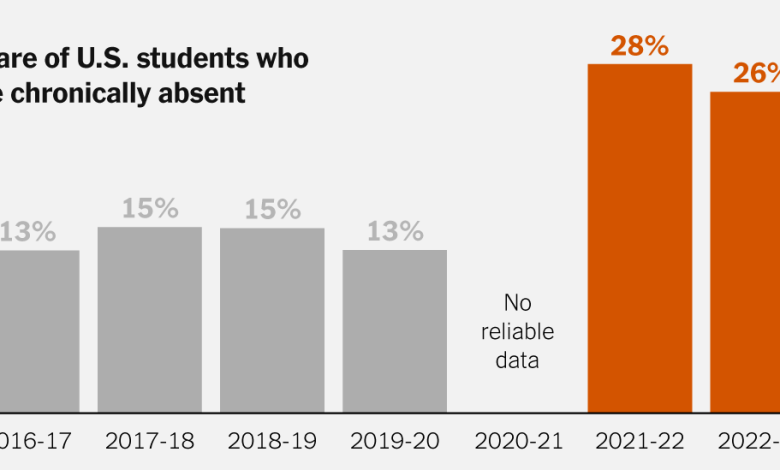How to Reduce Student Absenteeism


Why School Absences Have ‘Exploded’ Almost Everywhere
The pandemic changed families’ lives and the culture of education: “Our relationship with school became optional.”
To the Editor:
“Pandemic Effect: Absence From Schools Is Soaring” (front page, March 30) highlights the persistent challenge of chronic absenteeism in U.S. schools. If pandemic-related “cultural shifts” are among the factors keeping students away from school, bringing them back may require us to rethink the culture of education itself.
Despite the efforts of many visionary educators, too many schools still offer a deskbound, test- and compliance-driven experience that leaves students passive, uninspired and flat-out bored.
Over the last two years, a pilot program in Salem, Mass., has succeeded in cutting chronic absenteeism among middle schoolers in half by listening to students and designing learning with their interests in mind, including regular field trips, hands-on projects and mentoring with college students. Today, the chronic absenteeism rate among the pilot cohort of seventh and eighth graders hovers at 8 percent, in no small part because students don’t want to miss what’s on offer at school.
Educators can reset school culture by being adaptive, believing in teacher leadership and recognizing that powerful learning can happen outside classroom walls. Unlike the use of Band-Aids and gimmickry that do not result in long-term change, valuing a philosophy of “education everywhere,” as Salem has embraced, will result in improved attendance and academic growth.
Stephen Hinds
Laura Tavares
Stephen Zrike
Chelsea Banks
Mr. Hinds is president and Ms. Tavares is executive director of the WPS Institute, an education nonprofit. Dr. Zrike is superintendent and Ms. Banks is dean of innovation for Salem Public Schools.
To the Editor:
This article brings light to an issue plaguing school districts across the country. As a former classroom teacher, I remember talking with students who returned to school after being absent. They would ask for the work they missed. While I could share the assignment, I could not possibly share the rest of what they missed, including the social and academic interaction with their peers, the instruction provided, the opportunity to ask questions while working through material and being part of a community.




